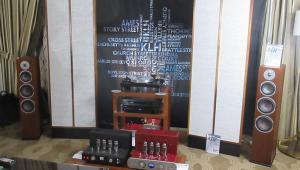What the Heck is ULE Technology and Why Should You Care?
So what is ULE technology? According to the ULE Alliance:
ULE addresses Ultra-Low Energy application requirements by introducing optimized communication methods. Identified with low power consumption, low latency, long range, moderate data rate and value-added complementary voice capabilities, ULE is the best-of-class technology which represents the next evolution in home networking.ULE is based on DECT (Digital Enhanced Cordless Telecommunications) which is the de-facto standard established by ETSI in 1993 for residential and business cordless phone communications.
Essentially, ULE is a subset of the DECT communications standard. Anyone who's used a DECT cordless phone is probably aware of how reliable, clear, and free-from-interference the connection between handset and base unit can be. The ULE Alliance is promoting the idea of using ULE as a communication standard for smart home systems and devices because of the technology's inherent reliability, long range, lack of interference, and—very importantly, in the opinion of the ULE Alliance—single-base unit with many direct connections to independently deployed devices architecture (basically the way a cordless phone system works with a single base unit directly communicating with multiple handsets throughout the house).
The ULE Alliance says that the industry has more than two decades of experience with DECT technology with more than 800 million DECT devices. You may not know this (I certainly didn't), ULE/DECT technology is currently "embedded in millions of home gateways" and the necessary chipset is "available from multiple chipset vendors". That means it's a mature, proven standard that uses widely available, low-cost hardware.
Some of the advantage of ULE technology over competing standards, such as ZigBee, Z-Wave, and Bluetooth are:
- Superior range — full house coverage passing multiple walls
- High capacity — thousands of nodes on a single base unit
- Interference free — using a dedicated spectrum
- Voice and visual — inherently supported by the standard
- Potentially years of battery lifetime
- Lower node and system costs
- Lower deployment & maintenance costs
- Ensured interoperability (by certification program)















































